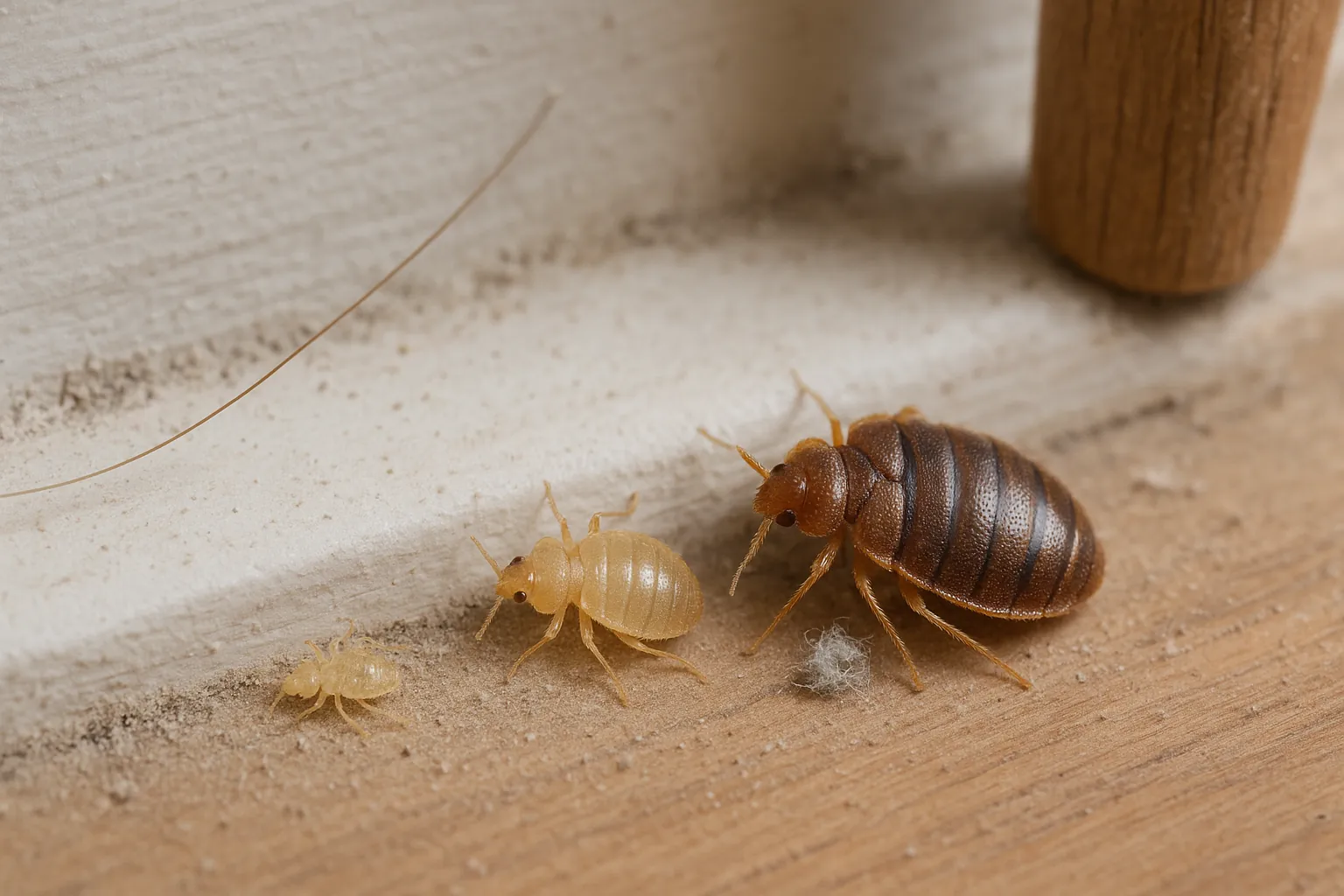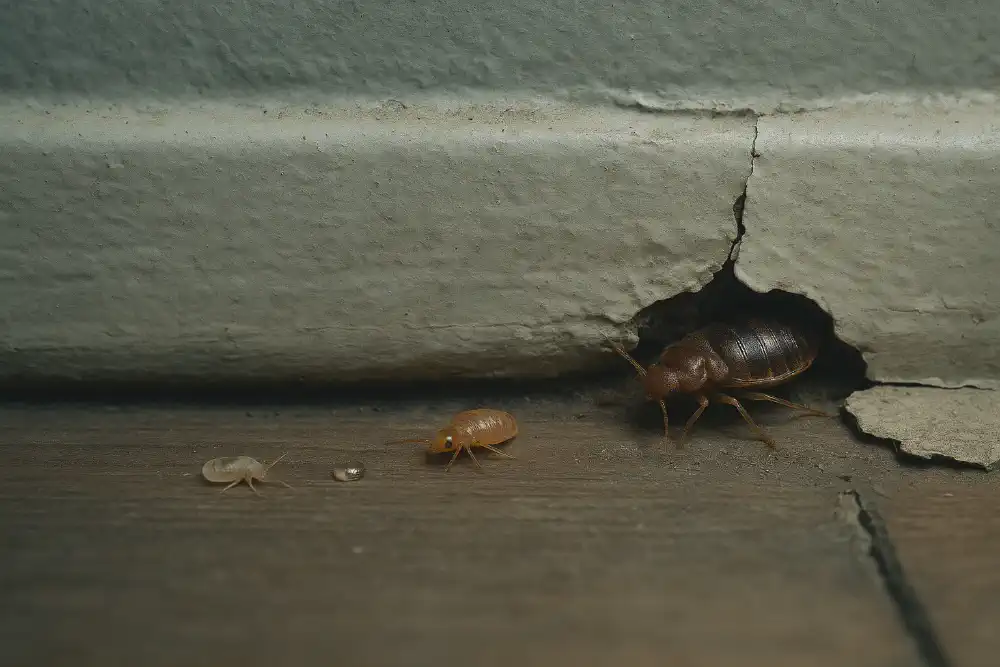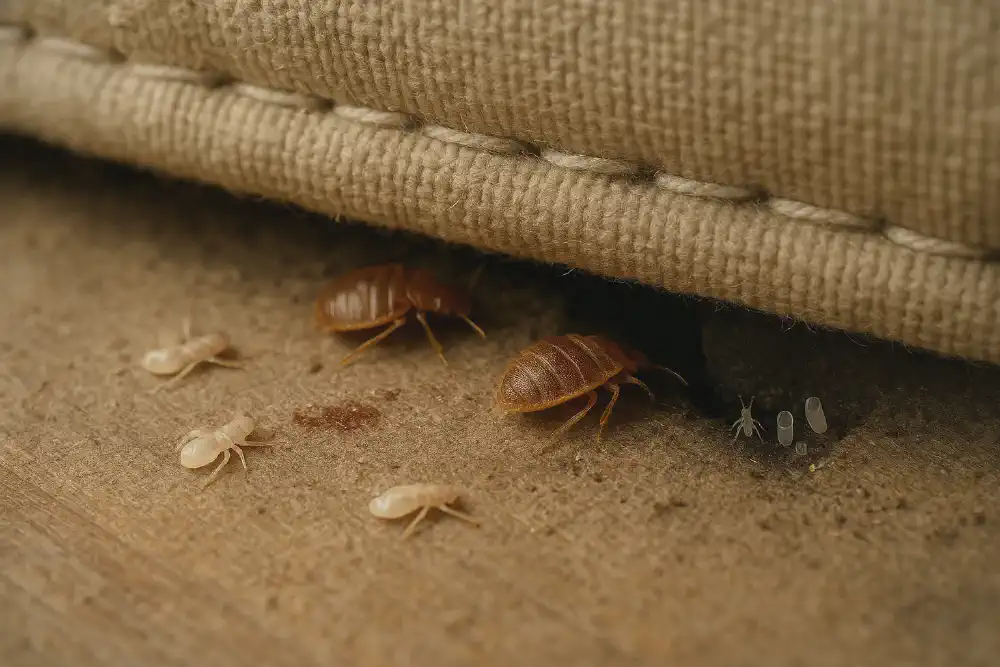
How Long Can Baby Bed Bugs Live Without Feeding?
Baby bed bugs survive 2-8 weeks without feeding, with newly hatched first instar nymphs lasting only 2-3 weeks while older fifth instar nymphs can survive 6-8 weeks before starving. This dramatic survival variation by development stage is critical because it determines how quickly infestations can collapse without hosts and explains why some baby bed bugs die rapidly while others persist for months. Understanding these life stage-specific timelines is crucial for assessing treatment effectiveness and infestation recovery potential. Professional pest control experts use these exact nymph survival parameters to calculate population crash timelines and determine when properties are truly clear, and you can apply this knowledge immediately to evaluate infestation dynamics and treatment success indicators. For more on what happens when no host is present at all, see how long bed bugs survive without a host.
Have Evidence Photos?
Found small insects that might match these baby bed bug survival patterns? Upload photos to confirm nymph identification and development stage.
Unsure If You Actually Have Bed Bugs?
Concerned about small insects that could be baby bed bugs in different survival stages? Chat with our system to assess your observations.
Life Stage Survival Analysis

First instar nymphs (newly hatched) represent the most vulnerable stage, surviving only 2-3 weeks without feeding at room temperature. These translucent, 1.5mm babies must feed within their first week to successfully molt to the second stage. Their high metabolic rate and minimal energy reserves make them extremely temperature-sensitive—survival drops to 1-2 weeks in warm conditions above 80°F.
Second and third instar nymphs survive 3-5 weeks without feeding, showing increased resilience as they grow larger (2-3.5mm). These stages have fed at least once, providing energy reserves that extend survival. Their amber coloration becomes more visible, making identification easier than first instars.
Fourth and fifth instar nymphs demonstrate maximum survival at 5-8 weeks without feeding. These larger nymphs (4-5mm) have successfully fed multiple times, building substantial energy reserves. Fifth instars are nearly adult-sized and can survive almost as long as adults under starvation conditions.

Temperature dramatically impacts nymph survival across all stages. Cool conditions (60-65°F) can extend survival by 40-60%, while temperatures above 85°F reduce survival by 50-70%. This explains why baby bed bugs survive longer in basements and wall voids compared to heated living spaces.
Have Evidence Photos?
With this nymph survival knowledge, identify what you're seeing. Upload photos of suspected baby bed bugs at any development stage.
Unsure If You Actually Have Bed Bugs?
Armed with these life stage survival timelines, determine if your situation matches baby bed bug population patterns.
Infestation Timeline and Population Dynamics

Newly hatched bed bugs create rapid infestation collapse potential because their short survival window means populations can crash quickly without regular feeding opportunities. However, mixed-age infestations with multiple nymph stages create staggered survival timelines—some die within weeks while others persist for months.
Professional infestation assessment considers nymph survival stages when determining treatment success. Finding only dead first and second instars after treatment indicates successful host elimination, while surviving fourth and fifth instars suggest continued feeding access or treatment gaps.
Egg survival complicates baby bed bug timelines because viable eggs can hatch 6-17 days after adult elimination, creating new first instar populations. These newly hatched nymphs then face the shortest survival window, often dying within 2-3 weeks if no feeding opportunities exist.
The staggered survival timeline explains why bed bug activity can fluctuate dramatically during treatment—initial rapid die-offs of younger nymphs followed by persistent activity from older stages, then potential resurgence from hatching eggs creating new vulnerable first instars.
If you’re dealing with a vacant property, travel scenario, or suspect clothing or luggage exposure, explore our guide on how long bed bugs can live in empty homes, luggage, and clothing to assess risk in those environments.
For comprehensive bed bug survival identification including adult comparison timelines, egg hatching schedules, and complete life cycle analysis, see our detailed How Long Can Bed Bugs Live Without Host guide covering all life stages and professional assessment strategies.
Have Evidence Photos?
With this nymph survival knowledge, identify what you're seeing. Upload photos of suspected baby bed bugs at any development stage.
Unsure If You Actually Have Bed Bugs?
Armed with these life stage survival timelines, determine if your situation matches baby bed bug population patterns.
Worried About Bed Bugs? Find Out Now – For Free!
Upload a picture and get instant, free detection. No guessing—just fast, accurate results. If bed bugs are found, we’ll recommend the right products and simple step-by-step treatment.
Click here to start – it’s 100% free!
Get started nowWorried About Bed Bugs? Find Out Now – For Free!
Upload a picture and get instant, free detection. No guessing—just fast, accurate results. If bed bugs are found, we’ll recommend the right products and simple step-by-step treatment.
Click here to start – it’s 100% free!
Get started now